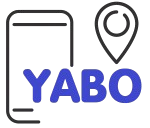Hair Braiding Business

Type: Service (Hair Braiding)
Key Product/s for Sale:
- Braiding services (box braids, cornrows, twists, faux locs)
- Hair care consultations
- Hair products (e.g., extensions, oils, conditioners)
Technology Considerations:
- Social media platforms for marketing (Instagram, Facebook, TikTok)
- Appointment scheduling software or apps
- Mobile phone for communication and customer interaction
- Basic point-of-sale system for payment processing.
Market for the Product/s:
- Young adults and teenagers interested in trendy and protective hairstyles
- Working professionals seeking low-maintenance hairdos
- School and college students
- Fashion-conscious individuals
Key Inputs into the Business:
- Materials: Hair extensions, beads, hair care products (oils, sprays)
- Labor: Skilled braiders (initially, the business owner can be the sole braider)
- Equipment: Combs, brushes, mirrors, chairs, styling tools (e.g., hair dryers, clips)
Product Preparation Process:
- Consultation with the client to decide on the braiding style.
- Preparation of hair (washing, conditioning, detangling).
- Braiding process (sectioning, adding extensions, styling).
- Final touches and application of hair care products.
Quality Considerations:
- Use high-quality, hypoallergenic hair extensions.
- Maintain cleanliness and hygiene in the workspace.
- Ensure proper training and skill development for intricate braiding styles.
- Regularly update styles to keep up with current trends.
Cost of Investment:
Materials: 5,000 KES to 10,000 KES (initial stock of extensions, hair products)
Labor: 0 KES (if the owner is the sole braider initially)
Equipment: 10,000 KES – styling tools
Marketing: 5,000 KES (social media ads, flyers)
Total estimated cost of investment: 20,000 KES
Required Operational Infrastructure:
- Small rented space or home-based setup with adequate lighting and ventilation
- Comfortable chairs for clients
- Mirrors for styling
- Storage for hair products and tools
Most Suitable or Viable Location of the Business:
- Urban or suburban areas with high foot traffic
- Near schools, colleges, and residential neighborhoods
- A location with easy access to public transportation
Potential Sources of Investment Capital:
- Personal savings
- Loans from family or friends
- Small business grants or loans from microfinance institutions
- Youth entrepreneurship programs
Requirements for Effective Management:
- Good communication and customer service skills
- Time management to handle appointments and walk-ins
- Inventory management to ensure a steady supply of hair products
- Basic bookkeeping for tracking expenses and income
Role of Mobile Phone and ICT in the Business:
- Use mobile phones for scheduling appointments and reminders
- Social media marketing to showcase styles and attract clients
- Online tutorials and courses for skill enhancement
- Mobile payment solutions like M-Pesa for easy transactions
Statutory Regulations and Licenses:
- Business registration with local authorities
- Health and safety compliance for hygiene standards
- Licensing from relevant beauty and cosmetology boards (if applicable)
Pricing:
Box Braids: 1,500 KES to 3,500 KES (depending on length and size)
Cornrows: 500 KES to 2,000 KES (depending on complexity)
Twists: 1,000 KES to 3,000 KES
Faux Locs: 2,000 KES to 4,000 KES
Profitability:
Profitability will depend on client volume, pricing strategy, and operational efficiency. With a steady stream of clients and low overhead costs, the business can achieve profitability within a few months.
Next Steps to Take:
- Research and purchase high-quality braiding materials.
- Set up a comfortable and functional workspace.
- Create social media profiles and start marketing the services.
- Offer discounts or promotions to attract initial clients.
- Network with local beauty supply stores and salons for partnerships.
- Continuously update skills and styles to stay competitive in the market.

